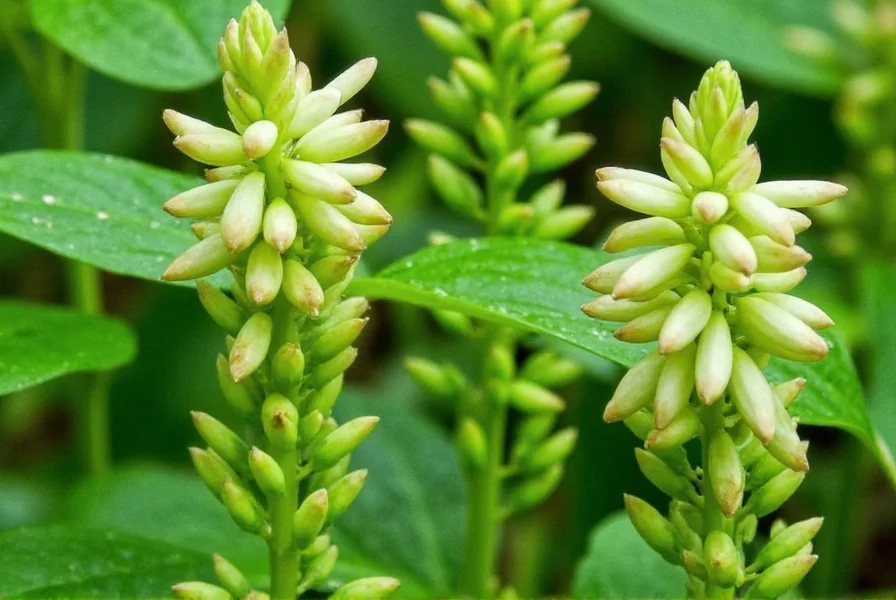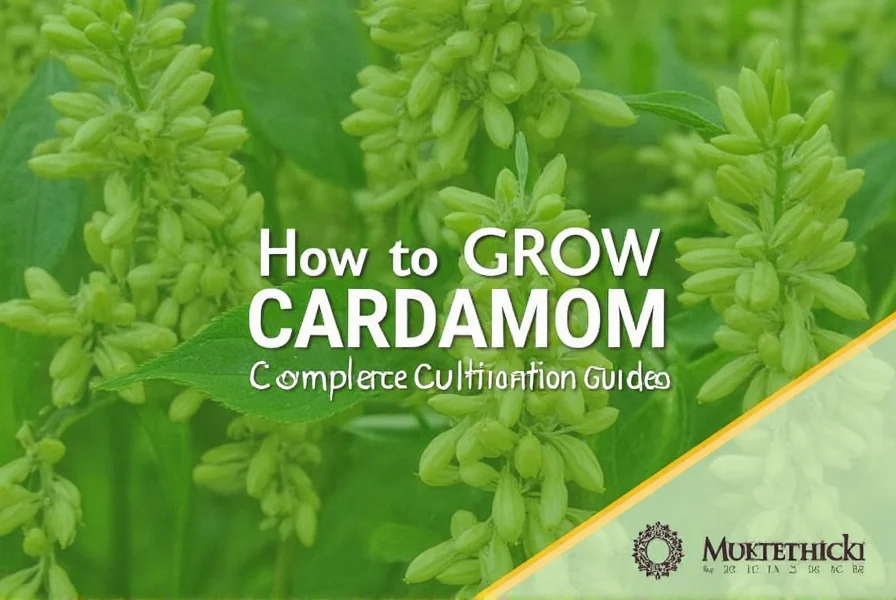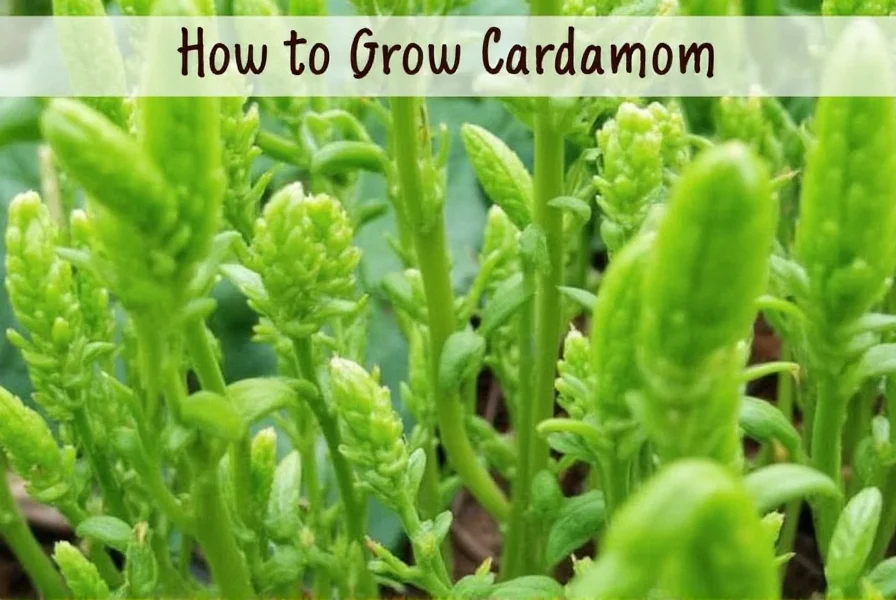Cardamom (Elettaria cardamomum), often called the “Queen of Spices,” is a rewarding but challenging plant to cultivate outside its native tropical habitat. This perennial herb from the ginger family produces aromatic green pods used globally in culinary and medicinal applications. While growing cardamom demands specific conditions, home gardeners can successfully cultivate this valuable spice with proper care and attention to its unique requirements.
Understanding Cardamom's Natural Habitat
Native to the moist evergreen forests of southern India, cardamom thrives in environments with consistent warmth, high humidity, and dappled sunlight. In its natural habitat, it grows as an understory plant beneath taller trees, which explains its preference for partial shade. The plant reaches 6-10 feet in height with long, lance-shaped leaves and distinctive pale green flowers that develop into the familiar triangular seed pods.
Climate Requirements for Growing Cardamom
Successful cardamom cultivation depends primarily on climate conditions:
| Climate Factor | Optimal Range | Tolerance Limits |
|---|---|---|
| Temperature | 68-85°F (20-29°C) | Frost kills plants; below 50°F growth stalls |
| Humidity | 60-80% | Below 50% causes leaf browning |
| Light | Partial shade (4-6 hours filtered sun) | Full sun scorches leaves; deep shade reduces yield |
| Rainfall | 60-120 inches annually | Drought stress reduces pod production |
Gardeners in USDA zones 10-12 have the best chance of outdoor cultivation. Those in cooler regions can grow cardamom in containers that move indoors during winter months. how to grow cardamom at home in non-tropical climates requires careful environmental management.
Soil Preparation and Planting Techniques
Cardamom prefers rich, well-draining soil with high organic matter content:
- Soil composition: Mix equal parts loam, compost, and perlite or sand
- pH level: Maintain between 5.5-6.8 (slightly acidic)
- Drainage: Essential—standing water causes rhizome rot
- Mulching: Apply 3-4 inches of organic mulch to retain moisture
Plant cardamom rhizomes (preferred over seeds for faster results) 2-3 inches deep in spring after last frost. Space plants 2-3 feet apart in raised beds or containers. cardamom plant soil requirements are critical for establishing healthy root systems that support pod production.

Watering and Ongoing Care
Maintain consistent moisture without waterlogging. During active growth (spring-fall), water when the top inch of soil feels dry. Reduce watering in winter when growth slows. cardamom plant watering schedule should include regular misting to maintain humidity levels, especially in dry climates or indoor environments.
Fertilize monthly during growing season with balanced organic fertilizer (10-10-10). Avoid high-nitrogen formulas that promote leaf growth at the expense of flowers and pods. Gently stake taller plants to prevent wind damage while preserving the natural clumping habit.
Harvesting Cardamom Pods
Patience is essential—cardamom takes 2-3 years to produce harvestable pods after planting. Watch for these harvest indicators:
- Pods change from deep green to light green with yellow tinge
- Pods feel firm but not hard when gently squeezed
- Flowers have fully developed into seed pods (about 3 months after flowering)
Harvest in early morning by cutting entire panicles (flower stalks) with pods attached. when to harvest cardamom pods significantly affects flavor quality—picking too early yields underdeveloped flavor, while waiting too long results in split pods and reduced shelf life.
Troubleshooting Common Growing Problems
Even with proper care, cardamom growers may encounter these issues:
- Yellowing leaves: Usually indicates overwatering or poor drainage—adjust cardamom plant care requirements accordingly
- Leaf browning: Caused by low humidity or direct sun exposure—increase misting and provide more shade
- No flowering: Insufficient nutrients or improper light conditions—adjust fertilizer and light exposure
- Rhizome rot: Result of waterlogged soil—improve drainage immediately
For gardeners wondering how long does it take to grow cardamom, expect 18-24 months from planting to first flowering, with harvestable pods appearing 3-4 months after flowering. Complete maturity for optimal yield takes 2-3 years.
Growing Cardamom in Containers
Container cultivation makes growing cardamom in temperate climates possible. Choose pots at least 18 inches deep with multiple drainage holes. Use a high-quality potting mix amended with coconut coir for moisture retention. Move containers indoors when temperatures drop below 55°F, placing them in a bright location away from direct heat sources. Maintain humidity by placing pots on pebble trays filled with water.

Storage and Preservation Methods
After harvesting, handle cardamom pods carefully to preserve flavor:
- Air-dry pods in shaded area for 2-3 days
- Store whole pods in airtight containers away from light
- For maximum flavor retention, keep pods intact until ready to use
- Ground cardamom loses potency within 6 months—whole pods retain quality for 1-2 years
Freezing whole pods extends shelf life to 3-4 years. For best culinary results, toast pods lightly before grinding to release essential oils.
Frequently Asked Questions
How long does it take for cardamom to grow from planting to harvest?
Cardamom takes 2-3 years to produce harvestable pods after planting rhizomes. The plant typically flowers in 18-24 months, with pods developing 3-4 months after flowering. Complete maturity for optimal yield occurs at 2-3 years.
Can I grow cardamom indoors successfully?
Yes, you can grow cardamom indoors with proper conditions. Use a large container (at least 18 inches deep) with excellent drainage. Maintain temperatures between 68-85°F, humidity above 60%, and provide bright, indirect light. Mist regularly and use a humidity tray to maintain proper moisture levels.
What are the most common pests that affect cardamom plants?
Common cardamom pests include aphids, spider mites, and mealybugs. In tropical regions, rhizome borers and capsule borers can damage plants. Prevent infestations by maintaining proper air circulation and avoiding overwatering. Treat pests with insecticidal soap or neem oil solutions for organic control.
Why are my cardamom plant's leaves turning yellow?
Yellowing leaves typically indicate overwatering or poor drainage. Cardamom requires consistently moist but not waterlogged soil. Check soil drainage and reduce watering frequency. Yellow leaves can also signal nutrient deficiency—apply balanced organic fertilizer monthly during growing season.
How do I know when cardamom pods are ready to harvest?
Cardamom pods are ready to harvest when they change from deep green to light green with a yellow tinge, feel firm but not hard when gently squeezed, and remain attached to the panicle. Harvest in early morning for best quality, cutting entire flower stalks rather than individual pods.











 浙公网安备
33010002000092号
浙公网安备
33010002000092号 浙B2-20120091-4
浙B2-20120091-4